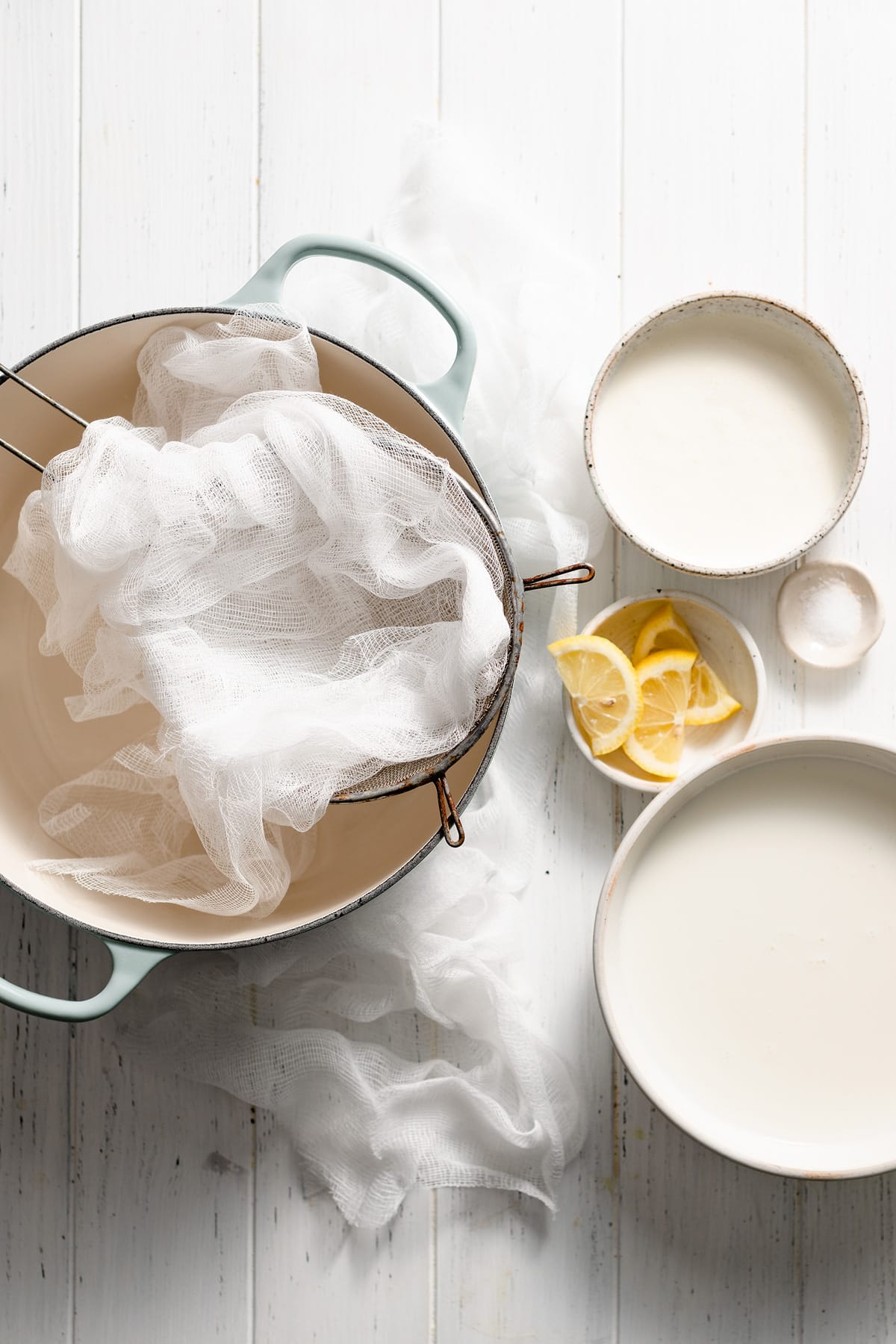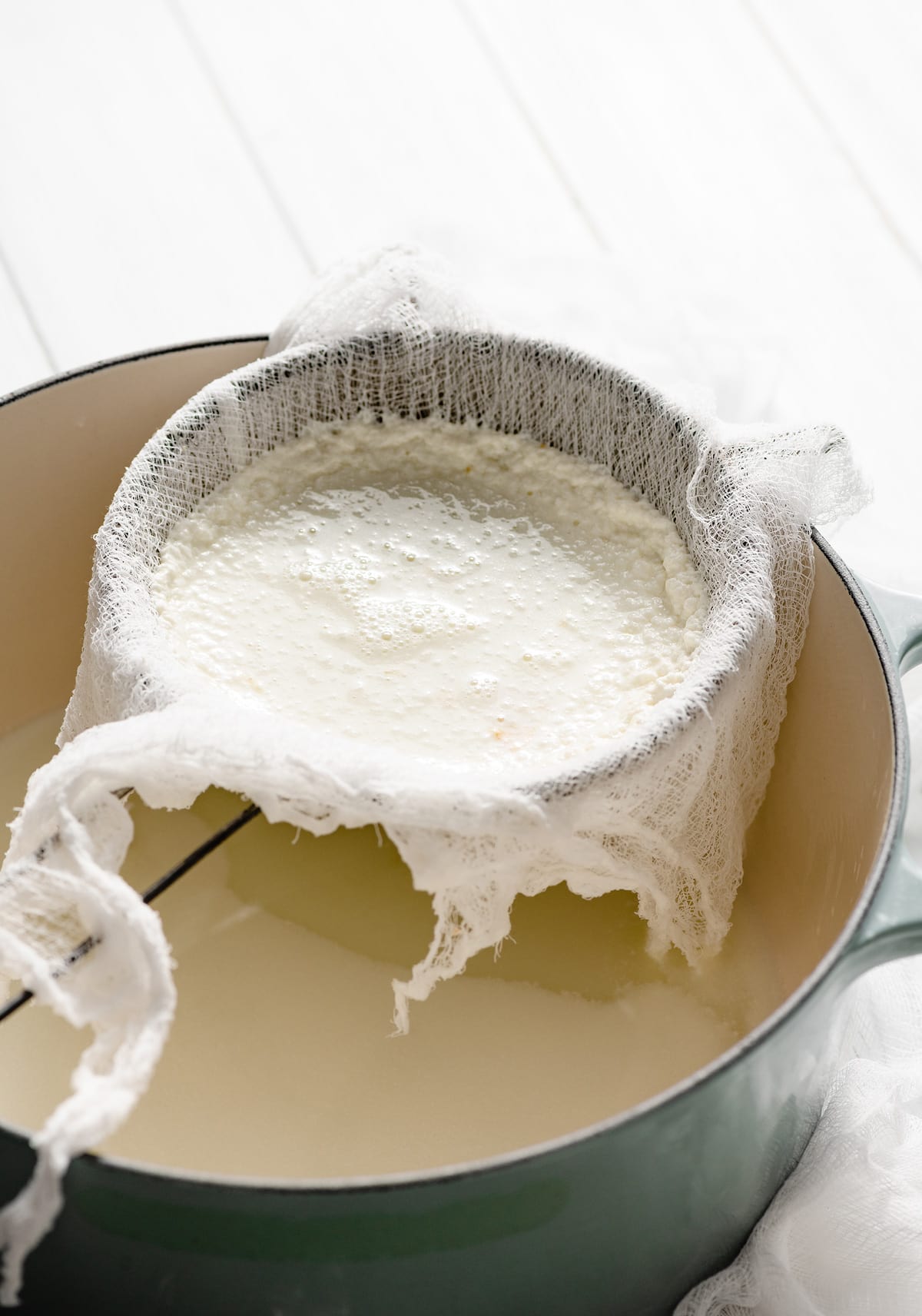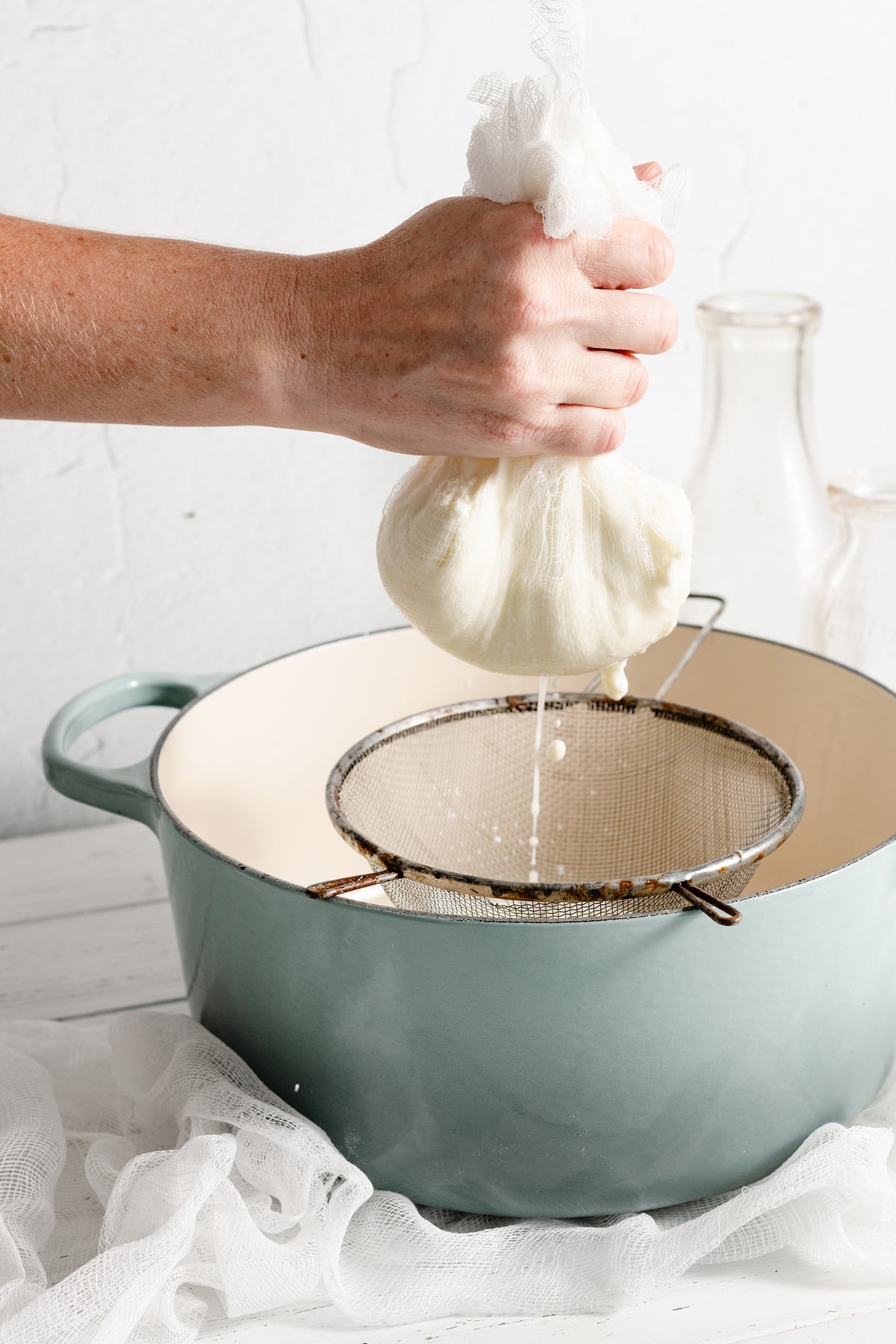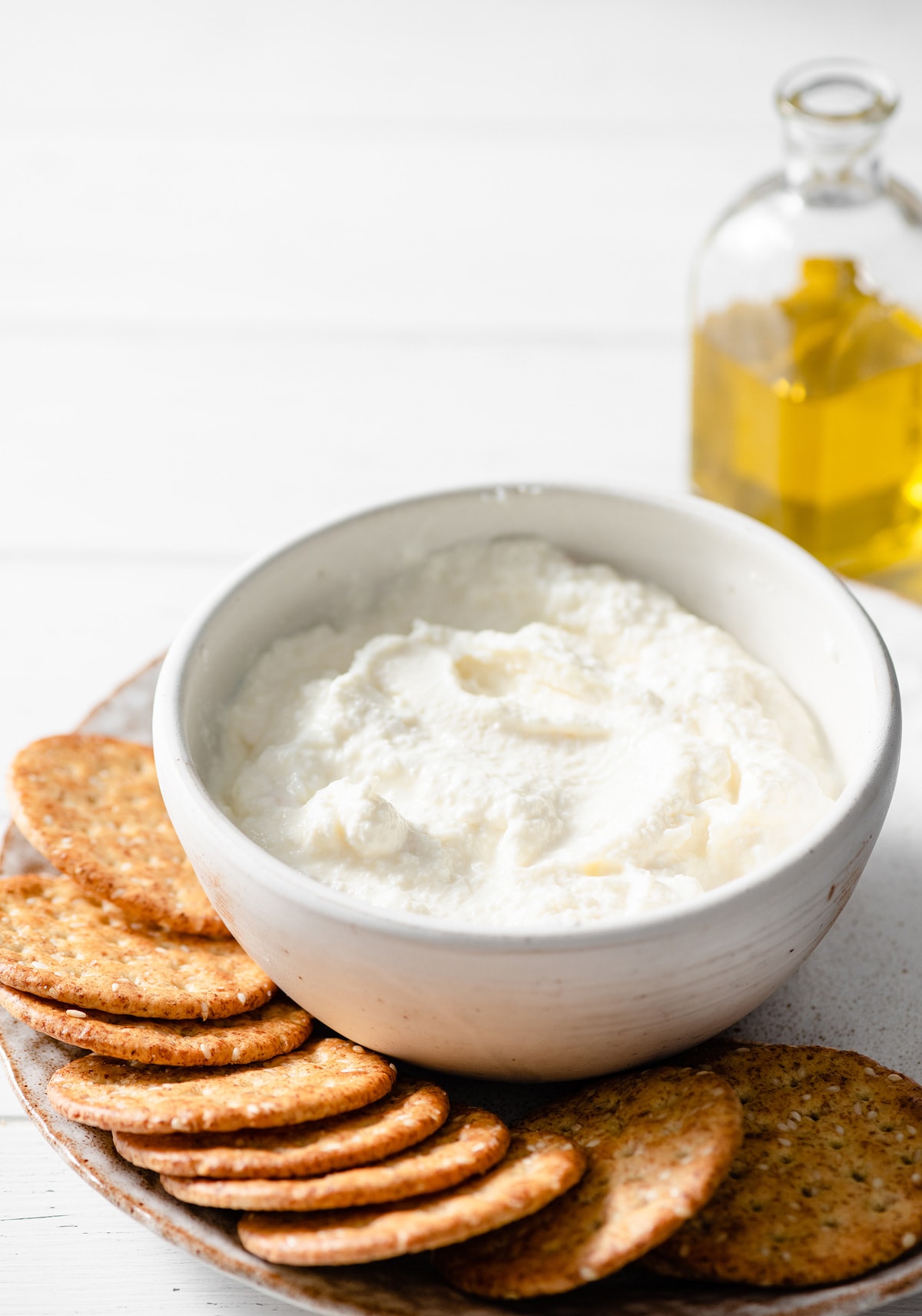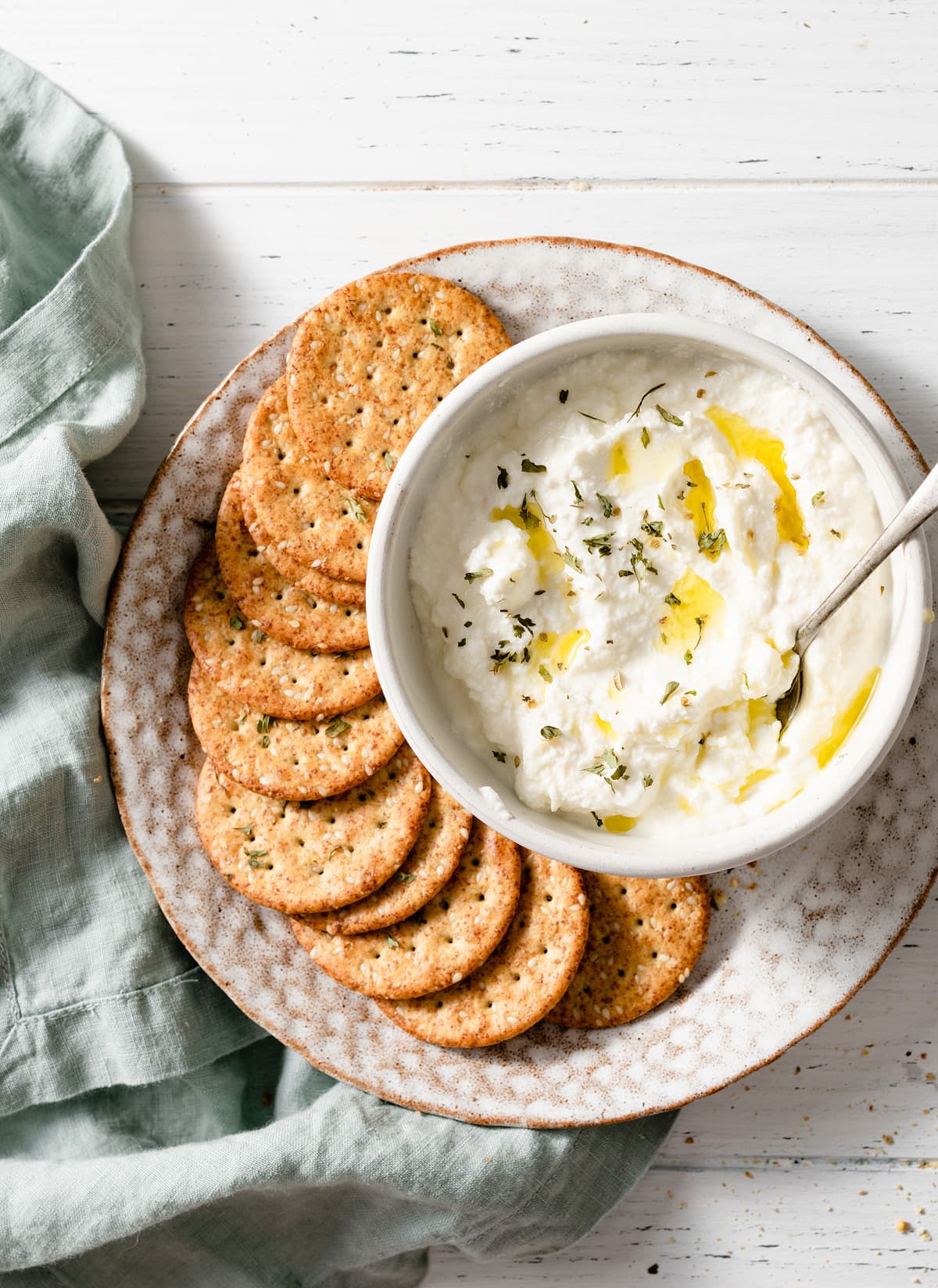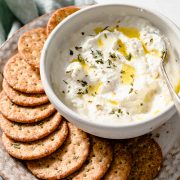Homemade Ricotta Cheese
This post may contain affiliate links. Read our disclosure policy.
Rich and creamy perfectly satisfying homemade Ricotta Cheese! It’s incredibly easy to make! You’ll really be amazed at how little effort it takes, with a few minutes hands on time and a foolproof method.
Plus fresh ricotta is the absolute best with it’s sublime flavor and texture. A must try recipe!
Homemade Ricotta Cheese Recipe
You can use this homemade ricotta the same as you would store-bought ricotta. It’s delicious as a dip, served with pasta or even added to desserts.
When you make it at home you can adjust the thickness to suite your taste, or for the dish you’ll be using it in. You can make it perfectly thick for hearty cannoli, or nice and light and creamy to slather across toasted bread with honey and cinnamon, or to dip crisp crackers into.
And of course it only makes sense to try it with pasta. I especially love it in extra cheesy manicotti.
An easy way to use it for dinner is to add it to linguine along with sautéed spinach, garlic, parmesan and some fresh lemon. Or for a well planned out dinner, layer it into your favorite homemade lasagna for one unforgettable dinner!
This is one of those made from scratch recipes you need to try. I know these days it can be hard to find time to make homemade ingredients but this one is so simple you’ll wonder why you haven’t been making it for years.
Note that this is the quicker version of homemade ricotta, the more traditional version uses leftover whey from making other cheeses and is heated to a certain temperature then strained. We like easy things though right? I’m all about this simplified version.
Ricotta Cheese Ingredients:
To make this simple recipe you’ll only need four basic ingredients:
- Whole Milk
- Heavy cream
- Salt
- Lemon juice
Can I Use Low Fat or Skim Milk?
2% milk will work but avoid 1% or skim. You may not get enough milk fat to create plenty of curds.
Also avoid half and half and stick with heavy cream for a rich end result. If you’d like you can even replace one cup of the milk with an extra cup of heavy cream for an even richer ricotta.
Can I Use Vinegar instead of Lemon?
Yes. If you don’t have a fresh lemon then white vinegar can be substituted (I’ve even seen white wine vinegar used but I’d an extra 1 Tbsp since it’s not as acidic).
Equipment You’ll Need:
- 5 or 6 quart pot
- Medium fine mesh strainer
- Food grade cheese cloth (you can find this at most large supermarkets by the cooking supplies)
How to Make Ricotta Cheese
As I mentioned before this couldn’t be easier to make! It only takes a few steps to achieve the tastiest ricotta you’ll try:
- Prepare a sieve for straining: line large fine mesh sieve with several layers of cheese cheesecloth. Set over a large bowl.
- Add dairy and salt to pot: pour milk and cream into a 5 or 6 quart pot. Add salt.
- Bring to a boil: heat mixture over medium heat and let come to a full boil, stirring frequently.
- Off heat add lemon: once it reaches the boil, remove from heat and immediately stir in lemon juice. Let rest 2 minutes.
- Strain mixture: carefully pour mixture through prepared sieve, while draining off liquid from bowl as it fills as needed.
- Let rest to reach desired thickness: let curds strain 1 – 60 minutes depending on how moist/dry you’d like it (I prefer around 10 minutes).
- Keep chilled: transfer to fridge and chill until cold. Store in refrigerator up to 4 – 5 days.
How Long Does It Keep?
It should keep well in the refrigerator up to 5 days. Which really isn’t much different from the store-bought stuff once opened.
Can I Freeze Ricotta?
Unfortunately no. Because it is milk based it won’t freeze well, the texture will change when thawed (the store-bought ricotta doesn’t freeze well either). So plan ahead for multiple recipes or scale the recipe in half if needed.
What to do with Leftover Liquid?
After you drain the curds you’ll be left with plenty of leftover whey (that liquid that’s strained off from the coagulation of proteins and fats in milk and cream). You can use it in:
- Pancakes
- Oatmeal
- Smoothies
- Breads (bagels, rolls, etc)
- Soup
- Polenta
- Reconstitute frozen fruit juice concentrate with it
Note: just don’t forget this leftover whey does have an acidity to it so be sure this won’t throw your recipe off.
Tips for the Best Ricotta
- Pasteurized milk is fine but avoid ultra pasteurized milk. The processed used with ultra pasteurized milk changes the protein structure so you wouldn’t achieve the same separation and and curdling in this recipe with ultra pasteurized.
- Use cheesecloth for straining. Paper towels or other things won’t work as well.
- Don’t adjust the amount of lemon, you need it to create curds.
- Use it within 5 days or it doesn’t taste as good and may even start to spoil.
Ricotta Cheese Recipes
Looking for some delicious ways to use it? Try it in any of these recipes:
- Lemon Ricotta Pancakes
- Italian Ricotta Cookies
- Lasagna, Lasagna Roll Ups, or Lasagna Soup
- Manicotti
- Baked Ziti
- Cannoli, Cannoli Dip or Cannoli Ice Cream
- Lemon Ricotta Cake
- Four Cheese Caprese Pizza
Follow Cooking Classy
Homemade Ricotta Cheese
Ingredients
- 7 cups whole milk (not ultra pasteurized)
- 1 cup heavy cream
- 3/4 tsp salt, or to taste
- 3 Tbsp fresh lemon juice
Instructions
- Line large fine mesh sieve with several layers of cheese cheesecloth. Set over a large bowl.
- Pour milk and cream into a 5 or 6 quart pot. Add salt.
- Heat mixture over medium heat and let come to a full boil, stirring frequently.
- Once it reaches the boil, remove from heat and immediately stir in lemon juice. Let rest 2 minutes.
- Carefully pour mixture through prepared sieve, while draining off liquid from bowl as it fills as needed.
- Let curds strain 1 - 60 minutes depending on how moist/dry you'd like it (I prefer around 10 minutes).
- Transfer to fridge and chill until cold. Store in refrigerator up to 5 days.

